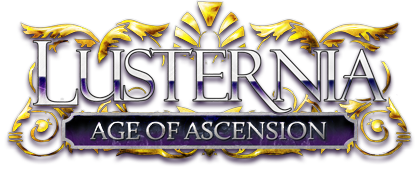Unknown2006-11-10 12:40:12
I read the zMUD help files that they provide, and I found the #ALARM syntax, but how exactly does it work? The way they word it is confusing for me. Could someone simple it down for me?
Unknown2006-11-10 12:50:39
You can create alarms with various timers.
You can make a temporary alarm that will disappear after it fires, by using + in front of the time value (in seconds):
You can make a recurring alarm that doesn't disappear when it fires, by using * in front of the time value (in seconds):
You can make an alarm that fires on specific times of the day, such as changing your log files at midnight every day or something like that, but using no + or * in front of the absolute time value:
And, if you want to control a timer, you give it a name. This allows you to enable and disable it, see how much time is left on it (with %alarm) and even change the time left on it (again, with %alarm):
Hope that helps.
You can make a temporary alarm that will disappear after it fires, by using + in front of the time value (in seconds):
CODE
#ALARM +2 {#say It's been two seconds. Bye now.}
You can make a recurring alarm that doesn't disappear when it fires, by using * in front of the time value (in seconds):
CODE
#ALARM *5 {#say Another five seconds has passed. Yay!}
You can make an alarm that fires on specific times of the day, such as changing your log files at midnight every day or something like that, but using no + or * in front of the absolute time value:
CODE
#ALARM 00:00:00 {#say Happy new day!}
And, if you want to control a timer, you give it a name. This allows you to enable and disable it, see how much time is left on it (with %alarm) and even change the time left on it (again, with %alarm):
CODE
#ALARM "testalarm" *2 {#if (@turnthisoff == 1) {#T- testalarm}}
Hope that helps.
Unknown2006-11-10 13:00:16
Wow. Yes! Thanks!
Now, how does the #SET command work? I read about it, and it makes sense, but I'm not clear on one thing. There's a Trigger in Nexus that picks up gold when it drops from a corpse. It looks like:
Then the Script sent through is:
Then it goes off into another balance trigger I have set up. My questions is, does the #SET command in zMUD need that = sign? The help would be appreciated! Thanks again!
Now, how does the #SET command work? I read about it, and it makes sense, but I'm not clear on one thing. There's a Trigger in Nexus that picks up gold when it drops from a corpse. It looks like:
CODE
sovereigns spill from the corpse.
Then the Script sent through is:
CODE
#set gold = 1
Then it goes off into another balance trigger I have set up. My questions is, does the #SET command in zMUD need that = sign? The help would be appreciated! Thanks again!
Drathys2006-11-10 13:05:53
I think what you're looking for is #var gold 1
Unknown2006-11-10 13:44:43
Thank you.
Now, is there a way to turn off the NUMPad being your walking thing? So that I can use the NUMPad like the numbers on the keyboard? And is there a way to allow me to scroll up on zMUD? So far, I'm not able to...
Now, is there a way to turn off the NUMPad being your walking thing? So that I can use the NUMPad like the numbers on the keyboard? And is there a way to allow me to scroll up on zMUD? So far, I'm not able to...
Unknown2006-11-10 13:59:15
You can scroll up using Page Up and Page Down or use the scroll bar on the right. You can also toggle the scrollback window with Ctrl-Z. It's re-sizeable, so you can set it to whatever height works for you.
You can disable the Numpad walking macros with these two commands:
You can disable the Numpad walking macros with these two commands:
CODE
#T- System|Keypad
#T- System|KeypadDiag
#T- System|KeypadDiag
Unknown2006-11-10 14:05:22
Zarquan, the world would be in total dissolusion if you didn't have your knowlege of stuff! Thanks!
Unknown2006-11-10 16:09:32
QUOTE(Zarquan @ Nov 10 2006, 08:59 AM) 352610
You can disable the Numpad walking macros with these two commands:
CODE
#T- System|Keypad
#T- System|KeypadDiag
#T- System|KeypadDiag
